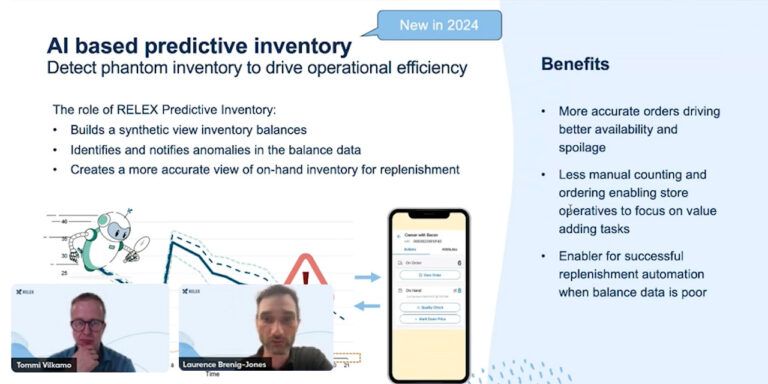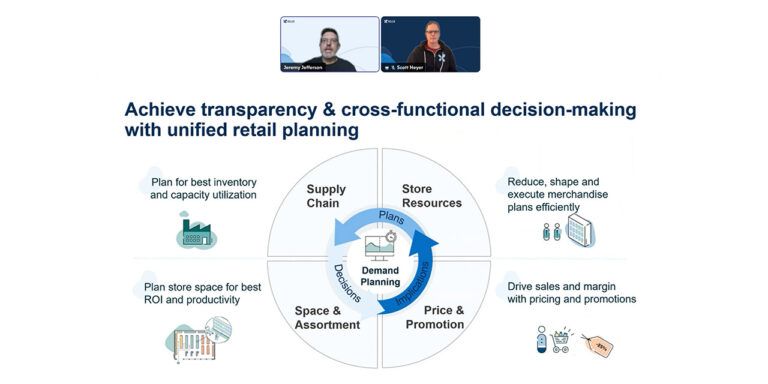
Unlock the Future of Supply Chain with AI: A Webinar on Practical AI Applications
Explore how AI evolved from theory to practical applications, transforming supply chains and retail with innovative tools and success stories.

Explore how AI evolved from theory to practical applications, transforming supply chains and retail with innovative tools and success stories.

As systems like ChatGPT rattle established tech stacks and business processes, some are hailing “generative AI” as the magic pill that will cure all work-related ills. Others see it as a precedent to an insidious puppet master that will render humanity redundant.

Positioned in the middle of the supply chain, wholesalers and distributors face unique challenges driven by industry shifts upstream and downstream. With the right strategies and technologies, they can protect margins and build optimized, resilient, and sustainable supply chains - becoming powerful commercial allies and passing on efficiency gains and profit opportunities to partners.

In this video, RELEX pricing optimization & promotions planning and optimization overview, RELEX Strategic Principal Jeff Bulger shares how unifying these essential processes with AI-enabled solutions is helping retailers drive profit and protect margins via precision pricing and truly effective promotions.

Discover how AI is transforming grocery retail by streamlining operations, predicting demand, reducing waste, and enhancing productivity in this riveting discussion with our fresh experts.

This webinar explores how cutting-edge AI technology can address phantom inventory, ensuring your inventory system is accurate and reliable.

Laurence Brenig-Jones and Greg Wilson from RELEX Solutions explore AI's transformative power and share practical industry insights.

When pushing the limits of performance, specialization is a must. It’s not just about having the right tool for the job; it’s about refining its design for optimum performance under specific circumstances.

There are two common misapprehensions about AI. The first is that AI is its own initiative, a separate investment that is superimposed onto all the other supply chain functions. The second is that all AI is created equal, and any engine will do.

Scott Curtiss, RELEX Head of Field Presales, discusses three key focus areas for wholesaler success and how AI-enabled solutions from RELEX can help them overcome their challenges and drive efficiency and profitability.

As the wholesale industry evolves, automation technology has become a necessity to maintain and expand a wholesaler’s market presence, ensuring they remain competitive.

Retail planning is as easy as riding a bike…with squeaky brakes…down a very steep slope. The terrain is pitted with data…

Phantom inventory haunts retailers. The inability to trust when an inventory system claims products are on shelves or in stock is enough to frighten any profit-minded retailer. Scarier still: phantom inventory is so hard to detect that retailers may never be able to identify how much money the issue costs them in the long run.

Discover the data management strategies and tools every IT leader needs to deliver ROI, increase efficiency, scale easily, and adapt to tomorrow’s challenges.

This video shares how RELEX is helping DIY retailers meet challenges and build a better, more efficient supply chain.

This webinar delves into proven tactics and innovative strategies for helping retailers maintain profitability and market share in the face of rising prices and shifting consumer behavior.

Using AI to optimize main replenishment days enables more efficient goods handling and store operations in retail distribution.

Managing inventory levels that meet demand efficiently requires an honest assessment of existing roadblocks, clearly defined goals, and a carefully considered roadmap.

This report explores challenges and discusses how retailers can take a stable and robust approach to pricing planning.

We spoke with Product Lead and resident RELEX F&R guru Stuart Douglas about how capacity challenges negatively impact retail companies — and how they can overcome them with the right planning solution.

Alex Jobin, Lead Solution Principal at RELEX, shares insights into why retailers need the right technology that can cut through the complexity and automate difficult tasks while still providing visibility and control.

Kimmo Koho, Director of IT and Sustainability, and Kirsi Virtanen, Senior Demand Planner and Development Manager, share insights into how their partnership with RELEX is helping them drive forecast accuracy, automate manual processes, and reach their service level goals.

The retail and space planning experts from Deloitte and RELEX Solutions navigate the challenges of space planning and unveil strategies for unified space planning and supply chain optimization.

As a retailer grows and matures, they will inevitably find themselves, at some point, needing to invest in merchandising systems. But which capabilities to prioritize?